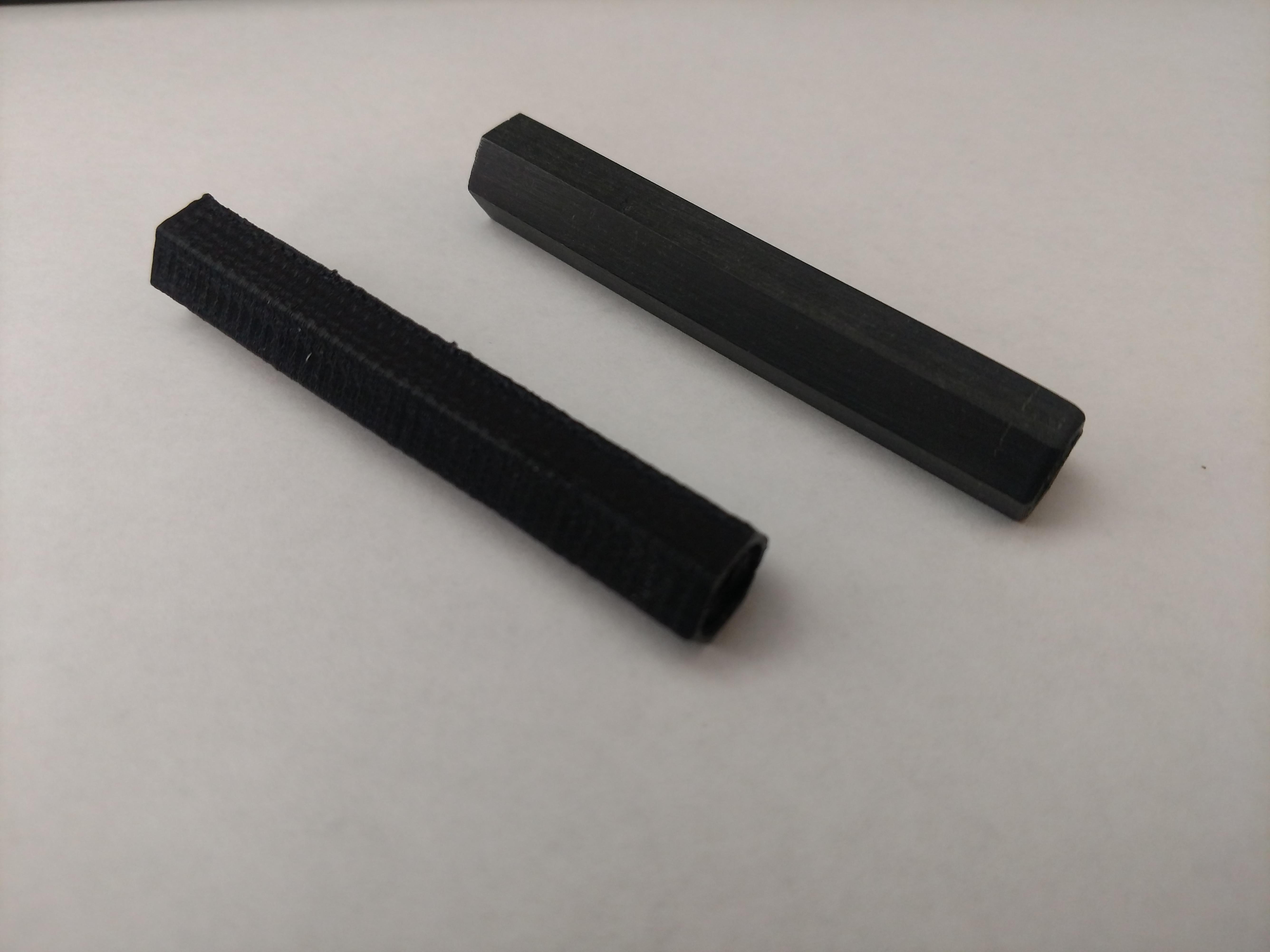TriScale
4 years ago I backed the Apollo Scale on Kickstarter (https://www.kickstarter.com/projects/roxtarlabs/the-apollo-technical-pen-and-drafting-scale), and a few months later a beautiful machined titanium engineering scale showed up at my doorstep.
I loved the triscale. I used it in conjunction with my (also kickstarter backed) Baron Fig Notebook, for designing web layouts and other things. The two worked together beautifully, with the Baron Fig folding flat, and the TriScale providing a sturdy straight edge and beautiful pens for fine straight lines.
Unfortunately, about 6 months into owning the Engineering scale, my backpack got stolen out of my car, along with the scale. At this time, the kickstarter campaign began to falter. People were complaining that the makers were no longer responding, and a bunch of backers had yet to get their scales. The makers website started returning an error page and it seemed there was no way to get another one.
So, as soon as I got an operational 3d Printer again, I started modeling out a replacement for myself. Closely inspecting their technical drawings on their kickstarter campaign, I roughed in some measurements in onshape.
A finished view in onshape: 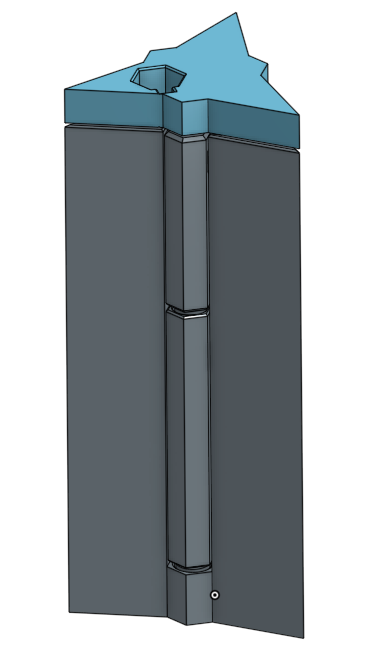
Exploded view: 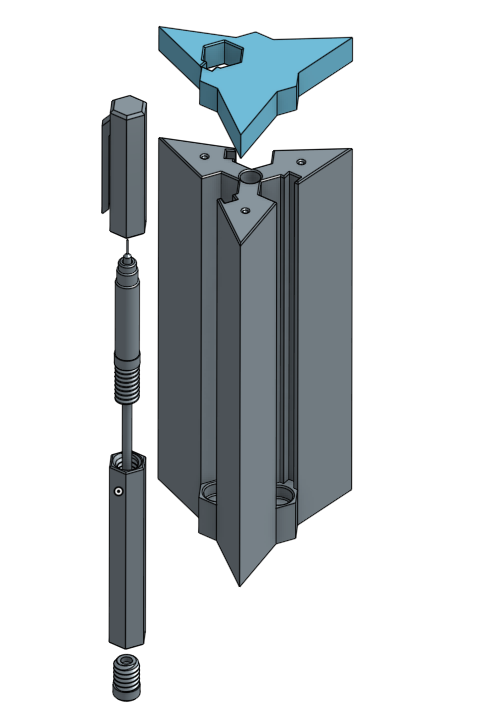
Imported in to Cura 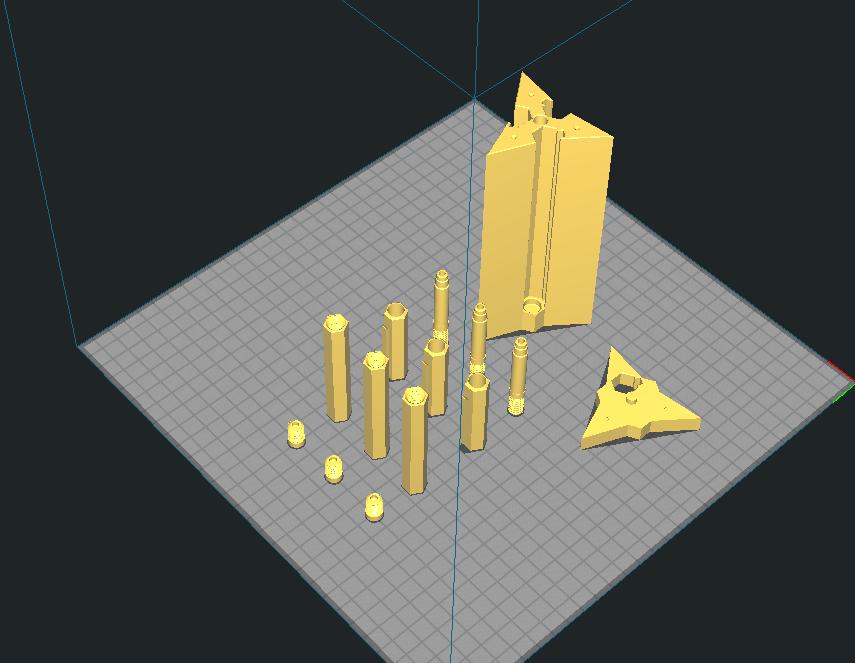
At this point, I decided to print at 100% infill. My first few rough drafts of the scale were at 10 or 20% infill for printing speed, but one of the things I loved about the original triscale was its weight. The original triscale was a mix of Titanium and Aluminium parts, which range in density between titanium at 4.5g/cm^3 to aluminum at 2.7g/cm^3. PLA has a density of 1.25g/cm^3, which means the closest I could get with pure PLA is between 25% and 45% of the original weight.
The Print took a long time, and it had a partial failure in it (two of the pen bodies fell over during this 36 hour print), causing some spagetti printing to occur. 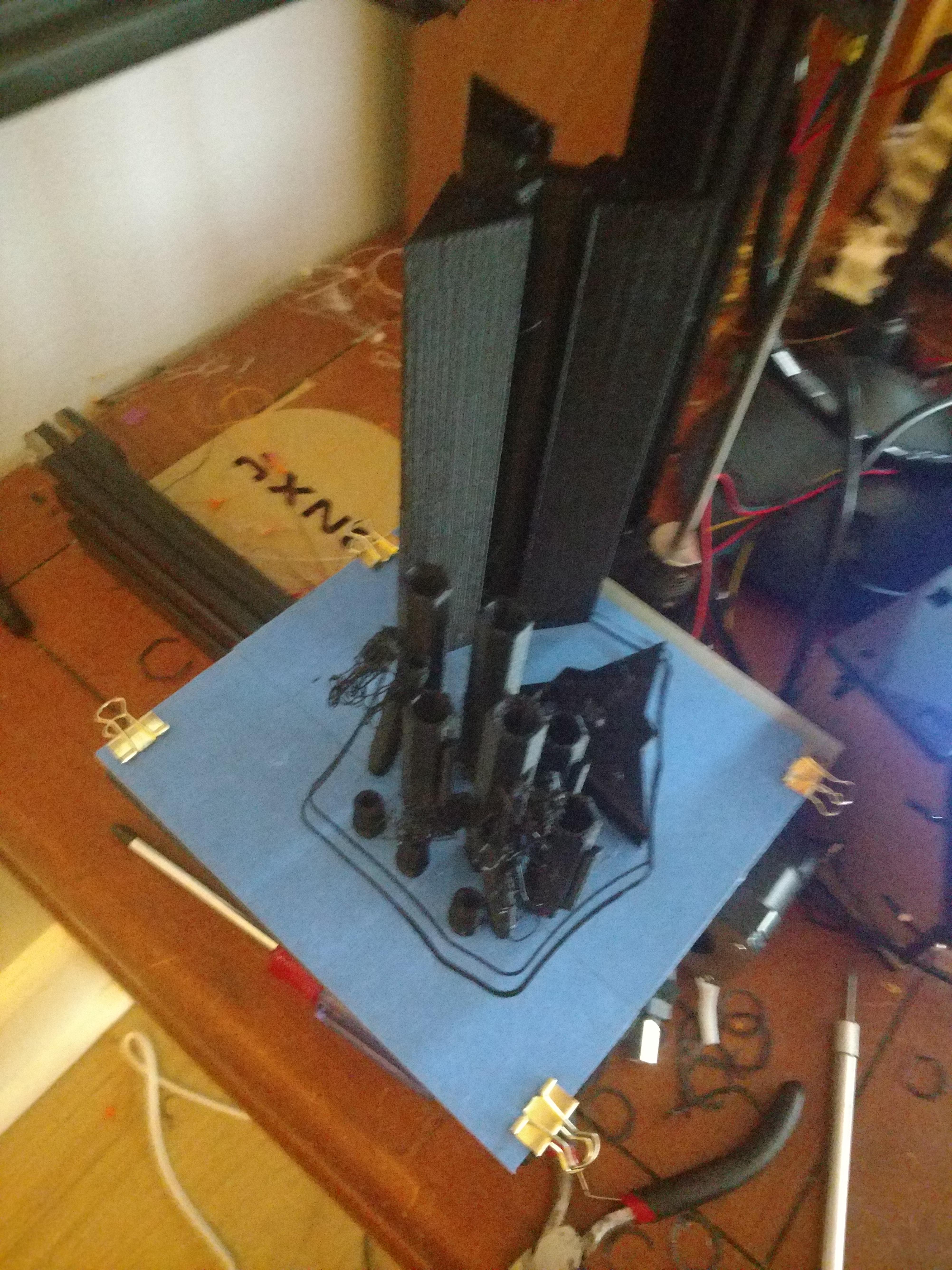
The finished piece was pleasantly heavy. It still had a very 3D printed look to it, so I started sanding down parts. And sanding, and sanding. Due to the odd angles of the scale, sanding was not an easy task. However the pen pieces sanded down nicely, and being 100% infill, by time time I was done, it was hard to tell that they were not injection molded parts.
Before and After Sanding Pen Bodies. 